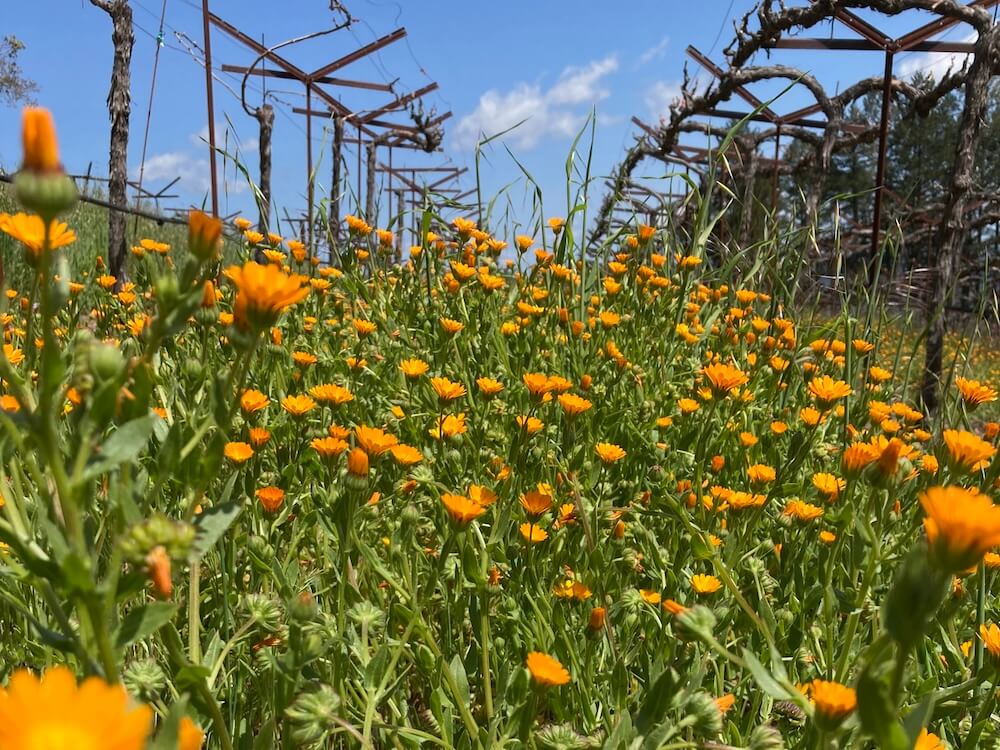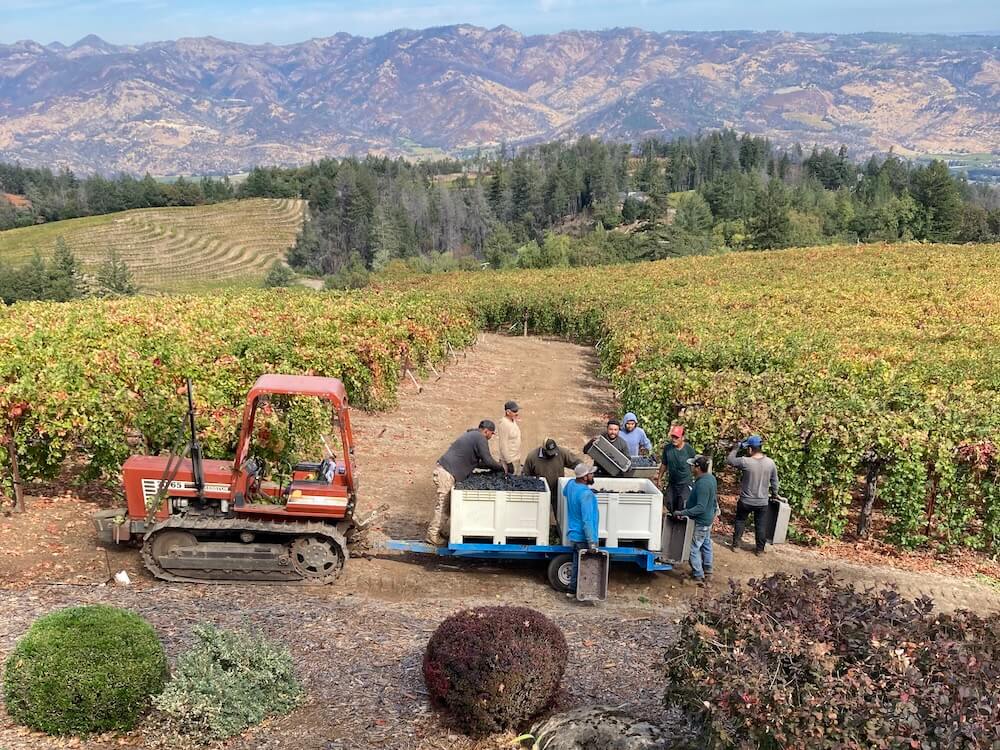Our Farm
Paloma Vineyard sits above the morning fog on the county line of Napa and Sonoma at the highest most point on Spring Mountain. Our rolling terraces range in elevation wrapping the mountain on three sides, allowing for variation in sun exposure, air flow, temperature, soil make up, and drainage, ultimately creating a range of microclimates throughout our 15 acres. We believe that these variable conditions, or stresses, are what make mountain fruit so special. Combined with meticulous farming practices and a modest approach to winemaking, these factors are at the heart of what makes Paloma wines so special.
Elevation
Our hillside terraced vineyard ranges from 2,015 to 2,235 feet. We sit just above the fog line, insolating us from the colder summer nights and protecting us from the intense summer heat.
Soil
Spring Mountain has a mixture of volcanic and sedimentary soils, with excellent drainage characteristics. Typically, the soil is slightly acidic, there is an abundance of calcium, lower levels of magnesium and phosphorus, and a mixture of kaolinite clay minerals. Paloma stretches over 4 distinct soil makeups, each with its own unique characteristics.
Sun Exposure
Our vineyard is primarily north-east facing, wrapping around the northern and easter edges of the mountain. This exposure allows for excellent soft early morning sun while the valley is still fogged in and limited late afternoon sun when it is at its most intense. Spring Mountain, in general, ranges from 3100 to 4800 growing degree days per year.
Temperature
In the summer months, at the top of Spring Mountain we are typically about 5-10 degrees cooler at the peak of the day and 5-10 degrees warmer than the valley floor at night. This less extreme, more consistent environment lends to excellent growing conditions and increased growing degree days compared to the valley floor.
Precipitation
Spring Mountain is known for its above average rainfall for the region–25-95 inches in the winter and less than 1 inch in the summer. However, with changing climates, we have seen wide variation in these numbers over the recent decades with multiple drought periods stretching up to 4 years.
Air Flow
While winters can bring extreme winds at the top of the mountain, on average we get consistent, light air flow through the growing season which helps minimize moisture in the clusters and the inherent risks, like mildew.

Grapes
Our current production grapes include Merlot, Cabernet Sauvignon, and Cabernet Franc. In the past, we have grown Syrah and Mourvèdre. We are currently experimenting with some different varietals and rootstocks to learn what might be best suited to our various terroir.

Winery
As an estate winery, our wines are made exclusively with the fruit we have grown ourselves. This is the only way we can assure the time and care required to grow the best fruit.
A Year On Our Farm
Sustainability
Sustainability is an integral part of our farming and day to day operations. It is not just how we farm; it is how we run our business. On the agricultural side, we practice regenerative farming and on the operations side, we are transitioning towards a net zero business. With the goal of being net zero by 2030, we are currently upgrading our solar array to cover 100% of our energy consumption and transitioning away from fossil fuels wherever possible.
We believe it is crucial to our success and our longevity to take steps to manage our impact. From our energy use to our ecological footprint, it is our responsibility to maintain our farm and our business for the Paloma family of today, and tomorrow.









